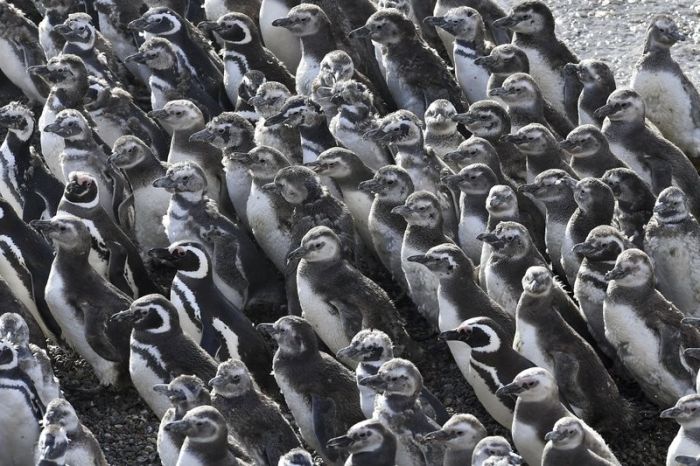|
|
Penguins
|
Penguins for the most part breed in large colonies, the exceptions being the Yellow-eyed and Fiordland species; these colonies may range in size from as few as a 100 pairs for Gentoo Penguins, to several hundred thousand in the case of King, Macaroni and Chinstrap Penguins. Living in colonies results in a high level of social interaction between birds, which has led to a large repertoire of visual as well as vocal displays in all penguin species. Agonistic displays are those intended to confront or drive off, or alternately appease and avoid conflict with, other individuals.
Penguins form monogamous pairs for a breeding season, though the rate the same pair recouples varies drastically. Most penguins lay two eggs in a clutch, although the two largest species, the Emperor and the King Penguins, lay only one. With the exception of the Emperor Penguin, where the male does it all, all penguins share the incubation duties. These incubation shifts can last days and even weeks as one member of the pair feeds at sea.
Penguins generally only lay one brood; the exception is the Little Penguin, which can raise two or three broods in a season.
Penguin eggs are smaller than any other bird species when compared proportionally to the weight of the parent birds; at 52 g (2 oz), the Little Penguin egg is 4.7% of its mothers' weight, and the 450 g (1 lb) Emperor Penguin egg is 2.3%. The relatively thick shell forms between 10 and 16 % of the weight of a penguin egg, presumably to minimise risk of breakage in an adverse nesting environment. The yolk, too, is large, and comprises 22–31 % of the egg. Some yolk often remains when a chick is born, and is thought to help sustain it if parents are delayed in returning with food.
|
|









